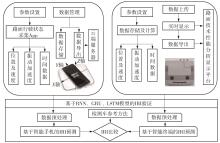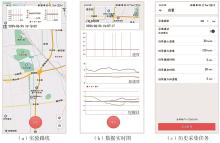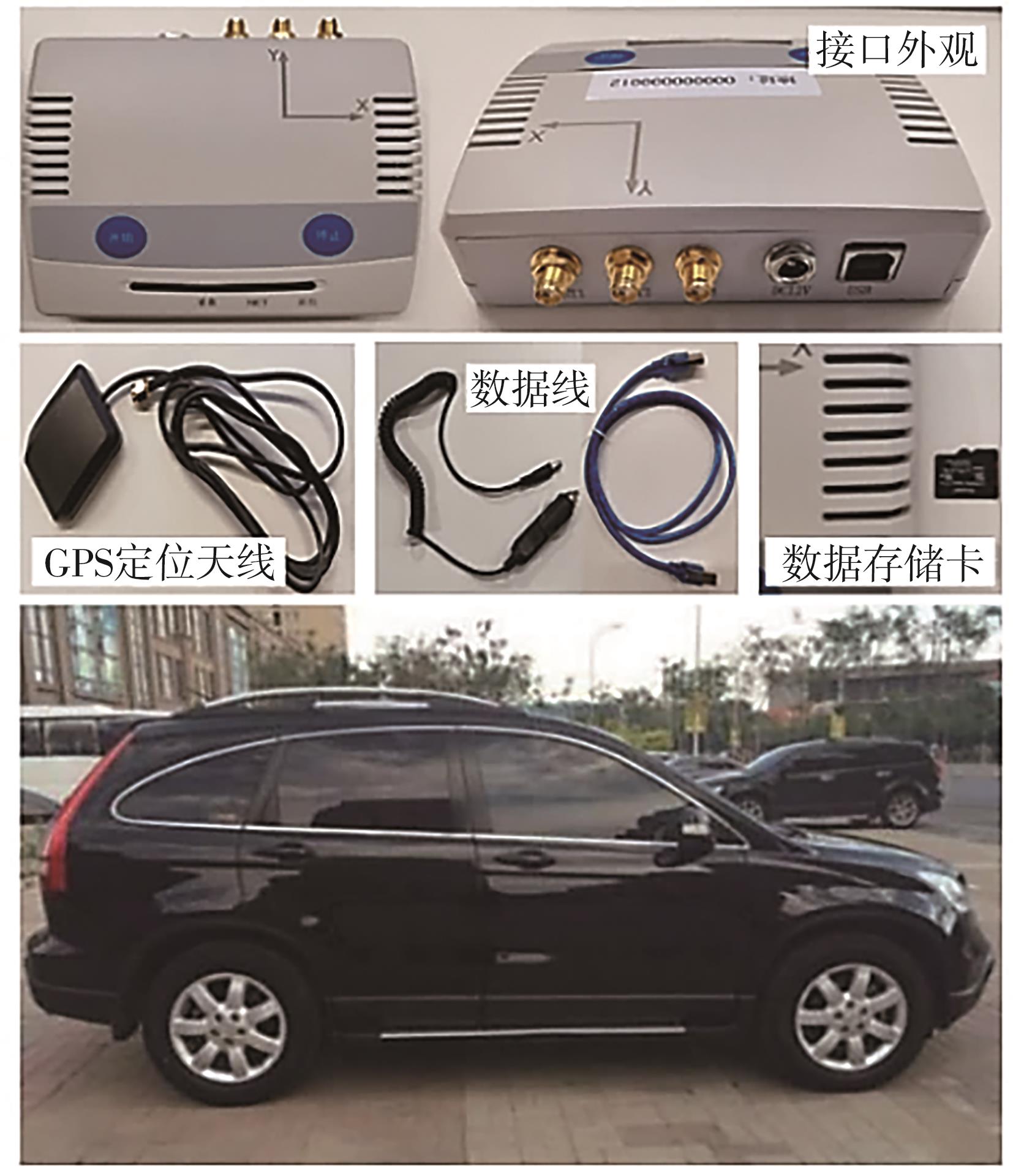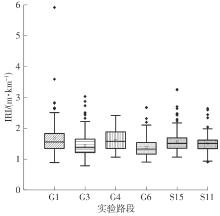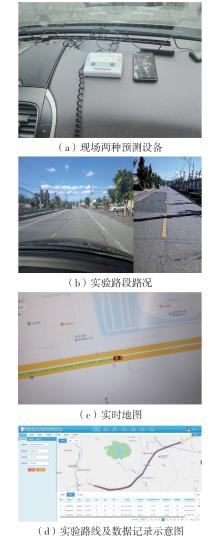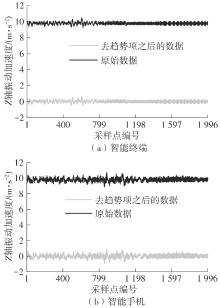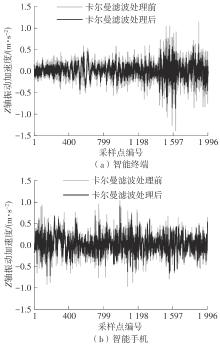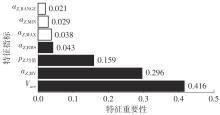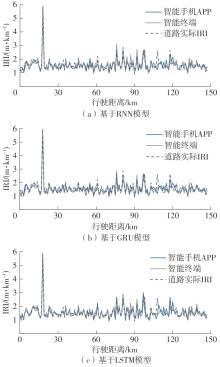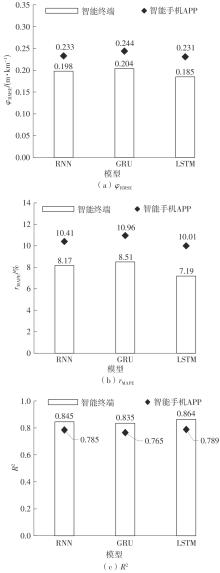Journal of South China University of Technology(Natural Science Edition) ›› 2025, Vol. 53 ›› Issue (6): 140-150.doi: 10.12141/j.issn.1000-565X.240350
• Intelligent Transportation System • Previous Articles
Prediction Accuracy and Its Comparison of Road Surface Roughness Based on Different Intelligent Devices
ZHANG Jinxi( ), PING Xinying, GUO Wangda, ZHANG Yuxuan
), PING Xinying, GUO Wangda, ZHANG Yuxuan
- Beijing Key Laboratory of Traffic Engineering,Beijing University of Technology,Beijing 100124,China
-
Received:2024-07-02Online:2025-06-10Published:2024-11-01 -
Supported by:the National Natural Science Foundation of China(52278423)
CLC Number:
Cite this article
ZHANG Jinxi, PING Xinying, GUO Wangda, ZHANG Yuxuan. Prediction Accuracy and Its Comparison of Road Surface Roughness Based on Different Intelligent Devices[J]. Journal of South China University of Technology(Natural Science Edition), 2025, 53(6): 140-150.
share this article
| 1 | PARK K, THOMAS N E, LEE K W .Applicability of the international roughness index as a predictor of asphalt pavement condition[J].Journal of Transportation Engineering,2007,133(12):706-709. |
| 2 | 张金喜,王琳,周同举,等 .基于行车振动的路面平整度智能检测方法研究[J].中外公路,2020,40(1):31-36. |
| ZHANG Jinxi, WANG Lin, ZHOU Tongju,et al .Research on intelligent pavement smoothness detection method based on driving vibration[J].Journal of China & Foreign Highway,2020,40(1):31-36. | |
| 3 | BOTSHEKAN M, ASAADI E, ROXON J,et al .Smartphone-enabled road condition monitoring:from accelerations to road roughness and excess energy dissipation[J].Proceedings of the Royal Society A,2021,477(2246):20200701/1-19. |
| 4 | 王琳 .基于行车数据的路面性能智能识别方法研究[D].北京:北京工业大学,2019. |
| 5 | CHEN G H, ZHANG J X .Influence of unit length on pavement roughness evaluation results based on driving vibration data[C]∥ Proceedings of the 7th International Conference on Environmental Science and Civil Enginee-ring.Britain:IOP Publishing,2021:032081/1-7. |
| 6 | DARAWADE K, KARMARE P, KOTHMIRE S,et al .Estimation of road surface roughness condition from android smartphone sensors[J].International Journal of Recent Trends in Engineering and Research,2016,2(3):339-346. |
| 7 | 杜豫川,刘成龙,吴荻非,等 .基于车载多传感器的路面平整度预测方法[J].中国公路学报,2015,28(6):1-5. |
| DU Yu-chuan, LIU Cheng-long, WU Di-fei,et al .Pavement roughness measurement method on automobile mounted multiple sensors[J].China Journal of Highway and Transportation,2015,28(6):1-5. | |
| 8 | 刘梓然 .基于多传感器融合的路面平整度预测方法研究[D].阜新:辽宁工程技术大学,2022. |
| 9 | 杜昭,张文榕,朱兴一 .基于网联车辆数据融合的路面平整度评估方法[J].中国公路学报,2024,37(6):302-316. |
| DU Zhao, ZHANG Wen-rong, ZHU Xing-yi .Road roughness assessment based on fusion of connected-vehicles data[J].China Journal of Highway and Transport,2024,37(6):302-316. | |
| 10 | 周游佳 .基于线激光传感器的非惯性道路平整度预测[D].北京:清华大学,2018. |
| 11 | SINGH G, BANSAL D, SOFAT S,et al .Smart patrolling:an efficient road surface monitoring using smartphone sensors and crowdsourcing[J].Pervasive and Mobile Computing,2017,40:71-88. |
| 12 | CHUANG T Y, PERNG N H, HAN J Y .Pavement performance monitoring and anomaly recognition based on crowdsourcing spatiotemporal data[J].Automation in Construction,2019,106:102882/1-11. |
| 13 | CHATTERJEE A, TSAI Y C .Training and testing of smartphone-based pavement condition estimation mo-dels using 3D pavement data[J].Journal of Computing in Civil Engineering,2020,34(6):04020043/1-11. |
| 14 | OKUDA T, SUZUKI K, KOHTAKE N .Non-parametric prediction interval estimate for uncertainty quantification of the prediction of road pavement deterioration[C]∥ Proceedings of the 2018 21st International Conference on Intelligent Transportation Systems (ITSC).Maui:IEEE,2018:824-830. |
| 15 | 王东,王霄鹏,杨川东 .一种基于主成分LSTM模型在股票预测中的研究[J].重庆理工大学学报(自然科学),2021,35(2):282-288. |
| WANG Dong, WANG Xiaopeng, YANG Chuandong .A study of stock forecasting based on LSTM model of principal component analysis[J].Journal of Chong-qing University of Technology (Natural Science),2021,35(2):282-288. | |
| 16 | DONG Y, SHAO Y, LI X .Forecasting pavement performance with a feature fusion LSTM-BPNN model[C]∥ Proceedings of the 28th ACM International Conference on Information and Knowledge Management. Beijing:ACM,2019:1953-1962. |
| 17 | ZHANG L, MENG W, CHEN A,et al .Application of LSTM neural network for urban road diseases trend forecasting[C]∥ Proceedings of the 2018 IEEE International Conference on Big Data.Seattle:IEEE,2018:4176-4181. |
| 18 | SAYERS M W, KARAMIHAS S M .The little book of profiling:basic information about measuring and interpreting road profiles[R].Lanham,Maryland:National Asphalt Pavement Association,NAPA,1998:1-102. |
| 19 | 王济,胡晓 .MATLAB在振动信号处理中的应用[M].北京:知识产权出版社,2006:241-242. |
| 20 | 孟琳 .面向路面平整性能的智能手机加速度传感器信号分析与应用[D].南京:东南大学,2018. |
| 21 | 陈蕊,王雪,王子文,等 .基于随机森林特征重要性和区间偏最小二乘法的近红外光谱波长筛选方法[J].光谱学与光谱分析,2023,43(4):1043-1050. |
| CHEN Rui, WANG Xue, WANG Zi-wen,et al .Wavelength selection method of near-infrared spectrum based on random forest feature and interval partial least square method[J].Spectroscopy and Spectral Analysis,2023,43(4):1043-1050. | |
| 22 | HOU J, YE X, FENG W,et al .Distance correlation application to gene co-expression network analysis[J].BMC Bioinformatics,2022,23(1):1-24. |
| 23 | 吴雪峰,刘亚辉,毕淞泽 .基于卷积神经网络刀具磨损类型的智能识别[J].计算机集成制造系统,2020,26(10):2762-2771. |
| WU Xuefeng, LlU Yahui, BI Songze .Intelligent re-cognition of tool wear type based on convolutional neural networks[J].Computer Integrated Manufacturing Systems,2020,26(10):2762-2771. |
| [1] | ZHU Shaopeng, MAO Jingyang, LIU Dongqing, et al. Design of Acceleration Slip Regulation Multi-Mode Control Strategy of Distributed Drive Electric Vehicle [J]. Journal of South China University of Technology(Natural Science Edition), 2025, 53(6): 44-55. |
| [2] | WU Wenliang, ZENG Weikai, LI Zhi, et al. Analysis of Water Accumulation Characteristics on S-Curve of Highway Based on Numerical Simulation [J]. Journal of South China University of Technology(Natural Science Edition), 2024, 52(8): 56-64. |
| [3] | WANG Jiangfeng, LI Xiudong, SONG Zhifan, et al. Differentiated Highway Toll Pricing Model Considering Carbon Emission Reduction Benefits [J]. Journal of South China University of Technology(Natural Science Edition), 2024, 52(8): 14-22. |
| [4] | QIU Yudong, WANG Zhan, XIE Zhishen. Optimization for Steel Frames with Semirigid Connections Based on Hybrid Algorithms [J]. Journal of South China University of Technology(Natural Science Edition), 2023, 51(6): 72-77. |
| [5] | ZHAO Jiandong, ZHU Dan, LIU Jiaxin. Metro Transfer Passenger Flow Prediction Based on STL-GRU [J]. Journal of South China University of Technology(Natural Science Edition), 2022, 50(5): 22-31. |
| [6] | ZENG Jingxiang, ZHANG Jinxi, CAO Dandan, et al. Intelligent Detection of Asphalt Pavement Roughness with kNN Method [J]. Journal of South China University of Technology(Natural Science Edition), 2022, 50(3): 50-56. |
| [7] | XIONG Ergang, ZU Kun, HU Qinbin, et al. Shear Capacity Prediction for RC Beams Without Stirrups Based on Mechanical Research [J]. Journal of South China University of Technology(Natural Science Edition), 2022, 50(11): 115-124. |
| [8] | TANG Mian, CHE Tianxin, SONG Xuming, et al. Study on Pre-tightening Force of Cable Clamp of Self-anchored Suspension Bridge Based on Creep Theory [J]. Journal of South China University of Technology (Natural Science Edition), 2022, 50(1): 59-68. |
| [9] | HU Guanghua, HUANG Junfeng, WANG Ning, et al. Identification and Location Algorithm of Connectors for Automatic Wiring System [J]. Journal of South China University of Technology(Natural Science Edition), 2021, 49(3): 17-24,33. |
| [10] | ZHANG Zhi, BAO Zhiying, SUN Jiajia, et al. Effect of Fermented Polygonatum sibiricum Polysaccharides on Intestinal Flora in Obese Mice [J]. Journal of South China University of Technology(Natural Science Edition), 2021, 49(3): 95-105,113. |
| [11] | YOU Dongdong LI Jialiang LIU Gaojun YANG Shan. Fault Early Warning Method Of Nuclear Valve Position Sensor Based On Bayesian LSTM Model [J]. Journal of South China University of Technology(Natural Science Edition), 2021, 49(12): 43-52. |
| [12] | XU Jun, LI Zhefan, Zhang Yang, et al. Points Selection in High-Dimensional Random-Variate Space for Simulating Stationary Stochastic Wind Field [J]. Journal of South China University of Technology (Natural Science Edition), 2021, 49(10): 95-103. |
| [13] | SUN Miao, WU Li, YUAN Qing, et al. Time-Frequency Analysis of Blasting Seismic Signal Based on CEEMDAN [J]. Journal of South China University of Technology (Natural Science Edition), 2020, 48(3): 76-82. |
| [14] | DAI Xiang HUANG Xifeng TANG Rui JIANG Mengting CHEN Xingshu WANG Haizhou LUO Liang. Subtopic Detection Algorithm Based on Hierarchical Clustering [J]. Journal of South China University of Technology(Natural Science Edition), 2019, 47(8): 84-95. |
| [15] | SUN Miao WU Li ZHOU Yuchun MA Chenyang WANG Yufeng. Optimal Denoising Smooth Model of Underwater Drilling Blasting Seismic Wave Signal [J]. Journal of South China University of Technology(Natural Science Edition), 2019, 47(8): 31-37. |
| Viewed | ||||||
|
Full text |
|
|||||
|
Abstract |
|
|||||
